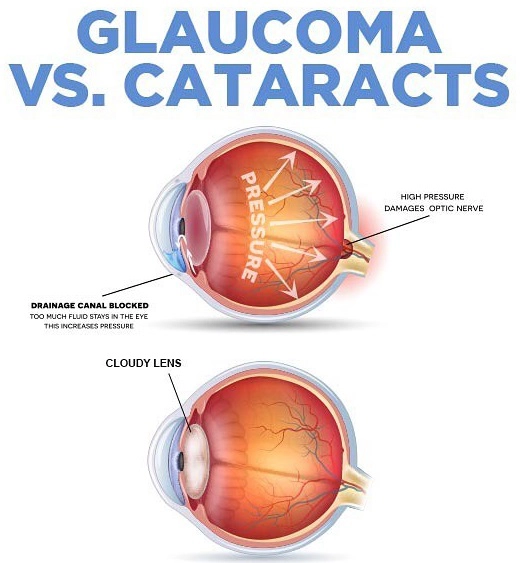According to the Australian Bureau of Statistics, over 13 million people (more than 55% of the population) live with one or more long term conditions that impact their sight. Both glaucoma and cataracts are common eye problems that can cause disruption to vision and discomfort to the sufferer in some cases. While there are some similarities in the symptoms of both these conditions, it's important to be aware of each of them as the causes and treatment are different. In this article, we explore glaucoma and cataracts, highlighting what each condition is and how symptoms present as well as the course of action medical professionals take to treat them.
What is Glaucoma?
Glaucoma is caused by fluid build up in the eye which increases pressure and results in damage to the optic nerve. This fluid build up usually happens if the natural outlet from your eye becomes blocked. There isn't a conclusive explanation for why this blockage occurs but some experts believe it could be hereditary. Rarer causes of glaucoma include damage from a traumatic or chemical eye injury, blocked blood vessels or a complication from an unrelated eye operation. While it can affect people at any age, it's most common among adults in their 70s and 80s.
What are the Symptoms?
People with glaucoma often don't tend to know they have it as it can develop slowly over a long period of time. When symptoms do start to appear, they can include a loss of peripheral vision, blurred sight or the appearance of coloured rings around bright lights. In some cases, more severe symptoms can develop such as acute eye pain, sickness and headaches or red, tender eyes. We strongly recommend consulting your doctor if you suspect you may have glaucoma. With medical intervention, it's a manageable condition but if left untreated, can ultimately cause permanent sight loss.
What are Cataracts?
Cataracts are small, cloudy patches that develop on the part of your eye known as the lens. These patches are caused by excess proteins building up in your eye. Age-related cataracts occur in older people but there are other types such as congenital cataracts that are present at birth, usually as a result of infection or poor development in the womb. Secondary cataracts present as a complication of other medical conditions such as diabetes while traumatic cataracts can develop following a traumatic eye injury.
What are the Symptoms?
Symptoms of cataracts include double vision, sensitivity to glare from headlights when driving at night and changes to the way you see colour. The lens of your eye can become a brownish yellow colour which alters and sometimes dulls your vision. Treatment often involves surgery, where your affected lens will be replaced with an artificial one.
What should I do if I think I might have an eye condition?
Consult your doctor who will be able to carry out a routine exam and organise the appropriate course of treatment. Our medical professionals are highly experienced and can quickly recognise the differences between glaucoma and cataracts in order to make the right diagnosis. We can arrange home visits seven days a week and cover areas across New South Wales and Queensland. You can register with us and book an online appointment today.




